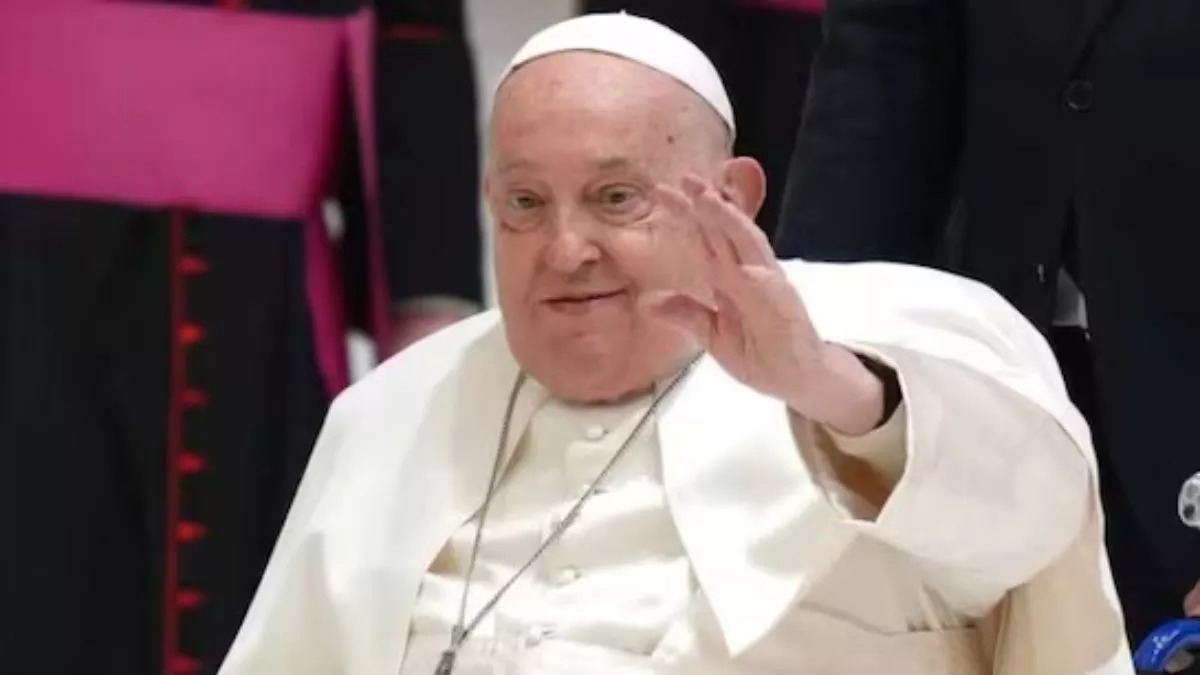
Pope Francis, the first Latin American pope of the Roman Catholic Church, died on Monday morning, Easter Monday, after a long illness. He was 88 years old and was hospitalized for 38 days this year after suffering from double pneumonia.
After returning from hospital in March, he appeared in public for the first time on Easter Sunday and greeted the devotees present there.
The Pope breathed his last on Monday
During his 12-year reign marked by division and tension, he worked to reform the conservative establishment. Being a critic of the rich, he was also called the messiah of the poor. Kevin Farrell, the second most senior priest (acting Pope) after Pope Francis until the new appointment, made the announcement on a TV channel.
When will the Pope's funeral take place
Farrell will preside over a mass at 11:30 p.m. Monday and the Pope's body will be placed in a coffin. According to a spokesman, the Pope's body may be taken to St. Peter's Basilica for a final audience on Wednesday morning. However, no date has yet been announced for the funeral.
Who was Pope Francis?
- Pope Francis' real name was Jorge Mario Bergogilo. He was born on 17 December 1936 in Buenos Aires, Argentina to an Italian immigrant family. After graduating as a chemical technician, he chose to become a priest and began his initiation into the Society of Jesus in 1958.
- After completing his studies in humanities in Chile, he came to Argentina in 1963 to complete his studies in philosophy. Here he also taught literature and psychology. In 1970 he obtained a degree in theology. In 1969 he was ordained a priest by Ramón José Castellano.
- On 13 March 2013, he was elected the 266th Pope. Mourning and funeral After the death of the Pope, the traditional mourning and funeral processes will begin. However, their dates have not been announced yet. First, his body will be kept for the viewing of Vatican officials in Santa Marta, a small church built along with St. Peter's Basilica, the residence of the Pope, after which it will be taken to St. Peter's for the general public.
- There are scheduled events for their funeral, including the announcement of the death in the papal palace, the carrying of the coffin to St. Peter's Basilica for a public viewing, and then the funeral and burial. Burials must be completed within four to six days of death, followed by nine days of official mourning (novendia).
The process of electing the next Pope
During Novendali, the leading clergy (cardinals) arrive in Rome for the meeting to elect the next Pope. This meeting must be held within 15-20 days after the Pope's throne becomes vacant. If all the cardinals agree, then this process can be started earlier. During this time, every cardinal casts his vote in secret sessions. After every session, this ballot paper is burned in a special stove.
Black smoke means that no pope has been elected, while white smoke indicates that the cardinals have elected a new pope. Potential contenders for a new pope Any Roman Catholic male who has taken a holy bath is eligible to become pope, but since 1378 only cardinals have been elected to the position.
Five people are believed to be potential candidates for the new pope:
- Cardinal Pietro Parolin: Parolin, 70, from Italy, is a senior Vatican diplomat and secretary to Pope Francis.
- Cardinal Marc Ouellet: Ouellet, 80, from Canada, headed the Vatican's bishops' office from 2010 until 2023.
- Cardinal Christoph Schoenborn: Schoenborn, 80, from Austria, was a disciple of Pope Benedict XVI and is an appeal to conservatives.
- Cardinal Luis Tagle: Tagle, 67, from the Philippines, was brought in by Pope Francis to head the Vatican's vast missionary office.
- Cardinal Matteo Maria Zuppi: Zuppi, 60, of Italy, is a disciple of Francis who led the Italian bishops' conference.
Who can elect the Pope?
Only cardinals under the age of 80 are eligible for this. Under the current rules, the number of these selectors is 120. However, according to the most recent Vatican calculation, the number of cardinals under the age of 80 is going to be 135. This number can be changed before the selection meeting begins. Cardinals above the age of 80 cannot vote but can participate in the general assembly before the meeting. During this time the problems of the church are discussed.
Read More: America now bombs ISIS targets in Nigeria, Trump says – Merry Christmas
--Advertisement--

 Share
Share



